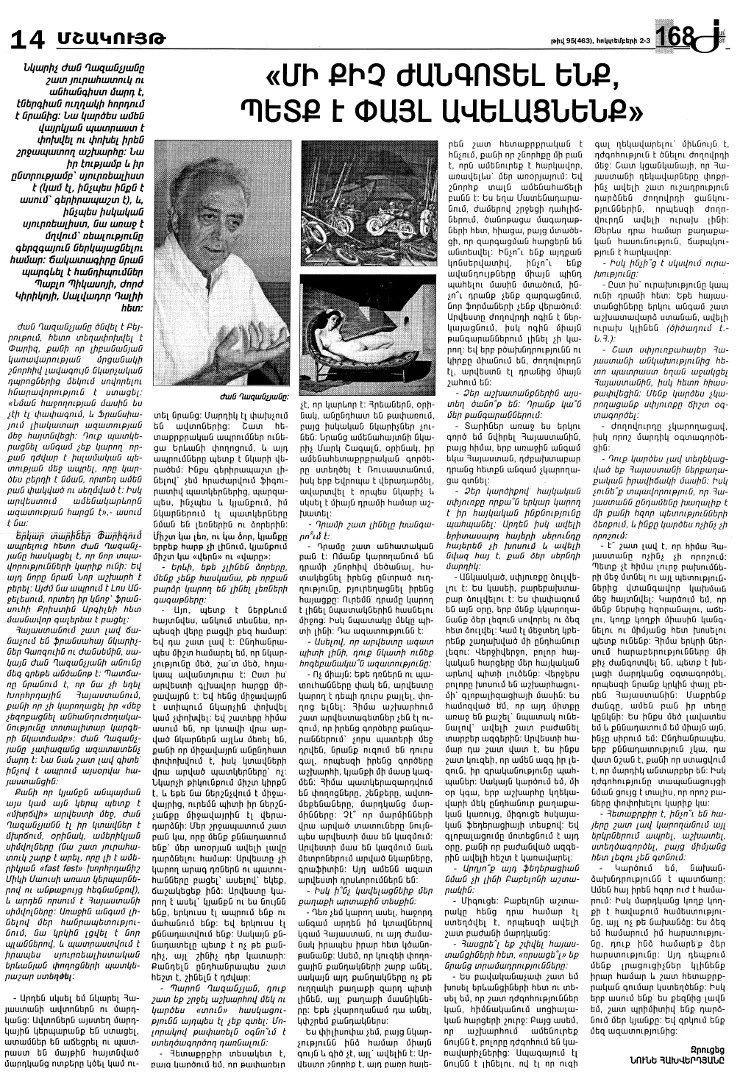ARTICLES
Galerie Mansart, Paris.
May 1997.
The subject and its double, the image and its echo, the positive and negative, absence and presence, the flatness of the printed impression and the suggestion or apparent impression of depth. These are the themes at the heart of the works presented by Jean Kazandjian, born in 1938 into an Armenian background, in his latest show.
The diversity of the techniques resorted to in the works on show here might lead us to believe that the artist has not one but many talents, were it not for the fact that his art testifies to a constant will to face up to the contradictory aspect of all things. Kazandjian is thus to be numbered among those who search. He is thus deserving of our fullest attention.
His work in transparency, based on the play between a trellis-screen and a veiled painted surface is of particular interest.
Marc Hérissé, La Gazette de l’Hôtel Drouot.
Galerie C.N.Q.A.O.S, Paris 1999.
Jean Kazandjian and the art of astonishment
“I m in search of a reality that fleetingly brushes against the universal, but which each time appears to us in the experience of its difference”.
Kazandjian’s inclination leads him towards the unknown. The present exhibition of previously unshown work, in which the artist’s outstanding technical expertise is clearly evident, allows Kazandjian to develop a whole range of explorations.
The colors: - blues, oranges and whites – are splendid. The duality of absence and presence is rehearsed in the paintings, as a series of figures seen from behind, most of them feminine, beckon the spectator to set out in their company on a movement towards the inner part of the work.
The play between the translucid screen and the opaque painted panel which it veils gives he work a kinetic dimension, but when the eye moves in front of the work the impression conjured up can more properly be qualified as a cinematic one. Old masters are honored. Ruben’s “Rape of the Sabines” is obliquely and subtly interpreted. Manet’s “Lunch on Grass” is reworked in various epochs and situations, with ironical reference to the refusal of the painting by the 1863 Art Salon. Giorgione’s sleeping Venus is inscribed in a range of horizontal and diagonal shapes.
Kazandjian has declared that his “perception focuses on the realm of what is fleeting, because everything seen is each time seen differently”.
This statement is borne out by the artist’s use of the trellis-screen, which “by breaking into the painted surface develops the idea of the painted illusion.
Alice T. Mavian, Achkar, April 17, 1999.


